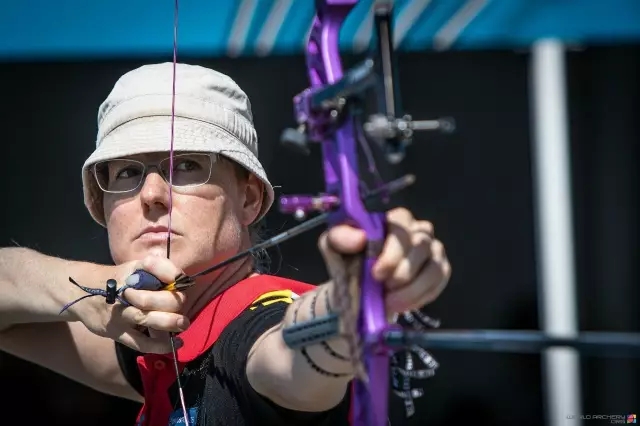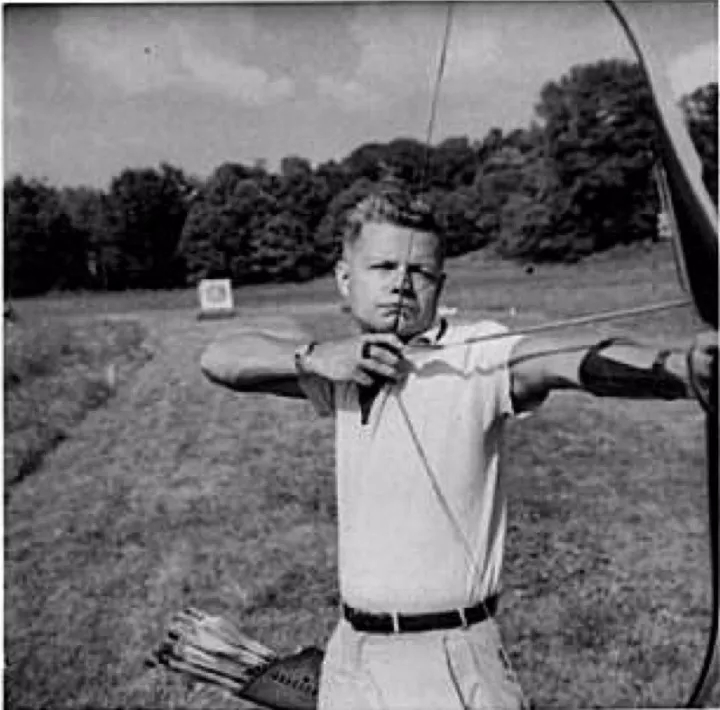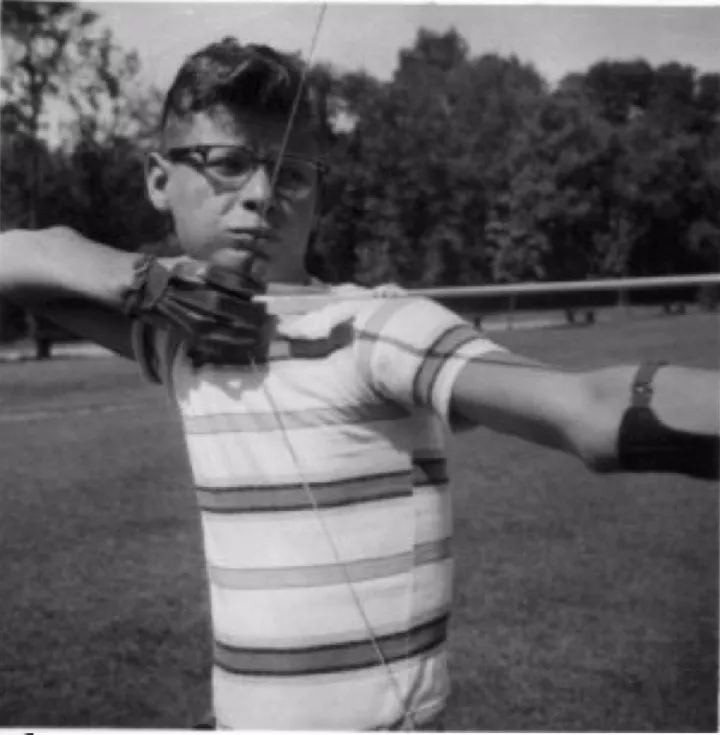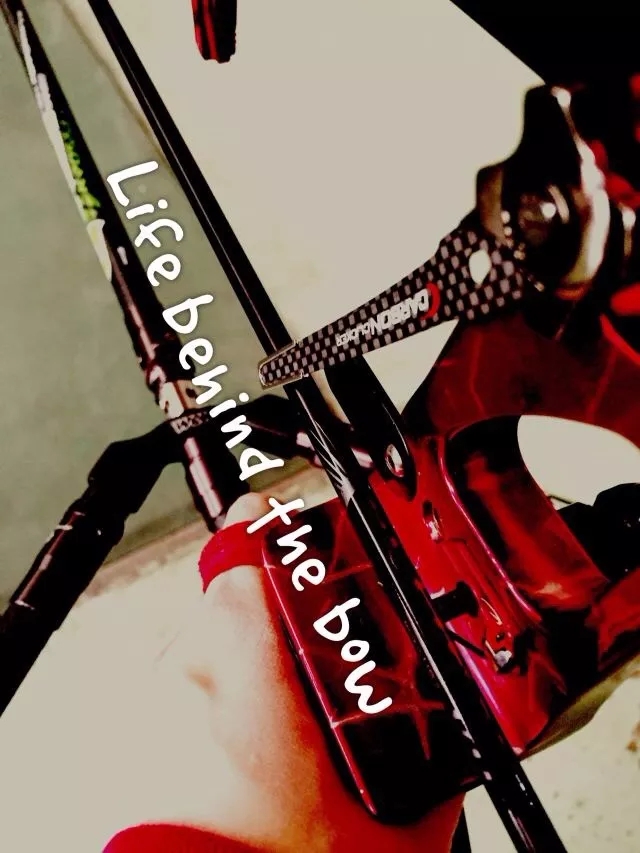Release time:2024-11-01 16:00:36Clicks:author:SPG ArcheryMain categories:Bows, Arrows, Archery Accessories

In 2017, the clicker is 60 years old.
How many people, once they cut the arrow and put the clicker on, they have to start practicing again; how many people, aiming at the yellow, can't pull the bow, or the bow is too fast before they aim, so they just throw it out in a fright...
Did you ever think like me: Who invented the "clicker" (also known as the signal piece, clicker), a subject that most recurve archers have to conquer? Why do we need to add it, and does it work?
How many people, once they cut the arrow and put the clicker on, they have to start practicing again; how many people, aiming at the yellow, can't pull the bow, or the bow is too fast before they aim, so they just throw it out in a fright...
Did you ever think like me: Who invented the "clicker" (also known as the signal piece, clicker), a subject that most recurve archers have to conquer? Why do we need to add it, and does it work?
"It's not clicking, it's not clicking, it's not clicking... Forget it!"
Whether you love it or are tortured by it to the point where you almost want to delete your account and start over, the clicker has changed many archers' ability to shoot with consistency.
Story time: Today we're going to tell the story of the invention of the clicker.
Now, the protagonist is the following: Fred Leder. And this article was written by his son Jim Leder.

In 1955, my family (mom, dad Fred, sister Janet, brother Terry, and me) went on vacation to Ludington, Michigan. We camped in Ludington State Park, right by the beautiful Hamlin Lake. By chance, the NFAA was hosting a national field archery competition in the park.
Dad was a gun hunter and shooting athlete. When he saw the archers competing, he thought archery was a good sport that the whole family could participate in. So after returning home to Cincinnati, we all got our first bow and arrow and received basic archery training at a nearby archery club.
By 1957, we were all improving rapidly and were all participating regularly in the various archery tournaments that were held almost weekly. However, Dad was the first to notice that as we improved our skills, many problems began to emerge. "Flinching, freezing, and sawing" are problems that many freestyle shooters need to overcome. Several of us had these problems.
Dad had the most serious problems. Because he was already an experienced rifle shooter, he had noticed the first two problems: flinching and freezing when aiming at the target. He decided that he had to find a way to help overcome these problems. In our basement archery range (about 25 feet, facing the targets on two layers of straw bales, and he had to sit to avoid hitting the floor brackets on the ceiling) he spent a lot of time researching tools to replace the "trigger". His idea was to abandon the mechanism of using the eye to trigger the shooting action and instead use the ear to listen for an audio signal.
His first experiment was a camera Selfie. He taped a timer to the bow, set it to about 7 seconds, and then aimed at the bull's eye until the timer stopped, then released the arrow. However, this method was not very effective because he found that he would still retract or saw, and the sound was a distraction to other shooters. There was also no penalty for releasing early, which meant that you could still ignore it.

Dad was a machine tool maker at the old Cincinnati Milling Machine Company. Because of his years of mechanical engineering experience, he quickly figured out that a small piece of elastic metal fixed to the front of the bow handle would rebound with a slight pressure once it passed the arrow, which could solve the above problem well.
His first batch of clickers were springs from clockwork clocks bought at Walgreen's. He bought new clocks, disassembled them, and used the springs inside.
Then he would cut these springs to about 3 inches long, drill two holes in them, and screw them directly to the bow handle where he thought it would be suitable. In 1957-58, he practiced in our basement with a clicker of his own invention, and by the spring he was taking first place in the regional competition. The clicker worked.
Soon, everyone in our family had clickers on their bows, and the results were remarkable. We went from being a nobody in archery to winning local, state, and national competitions. I was probably one of the luckiest archers, winning many national competitions, both field and field, as a teenager.
The clicker really caught the attention of the national field archery competition in Crystal Springs, Arkansas in 1961. I was 16 years old, shooting in the intermediate category, but my scores were almost as good as those of the adult men. At the exhibition after the competition, many people saw the clickers we used and realized the improvement they could help archers achieve. After that, the clicker became popular and began to appear on many bows.
Soon, Earl Hoyt of Hoyt Archery asked my dad if he had a patent on his clicker. Dad said no, but Earl asked if he would mind if Hoyt started selling clickers. Dad said no. So I guess Hoyt was the first company to sell clickers, and they added a little piece of leather with adhesive backing to the back of the clicker.
I went to Miami University in Oxford, Ohio to watch the national archery competition there, and it was hard to find an archer who didn't use a clicker. Later I watched the Olympics on TV, and the situation was the same.
So it makes sense to think that my dad should be fully responsible for this device that is either useful or annoying. But seeing so many archers using it, I think the usefulness must be a larger proportion!

Although it is not in the photo, the bow does have a clicker!